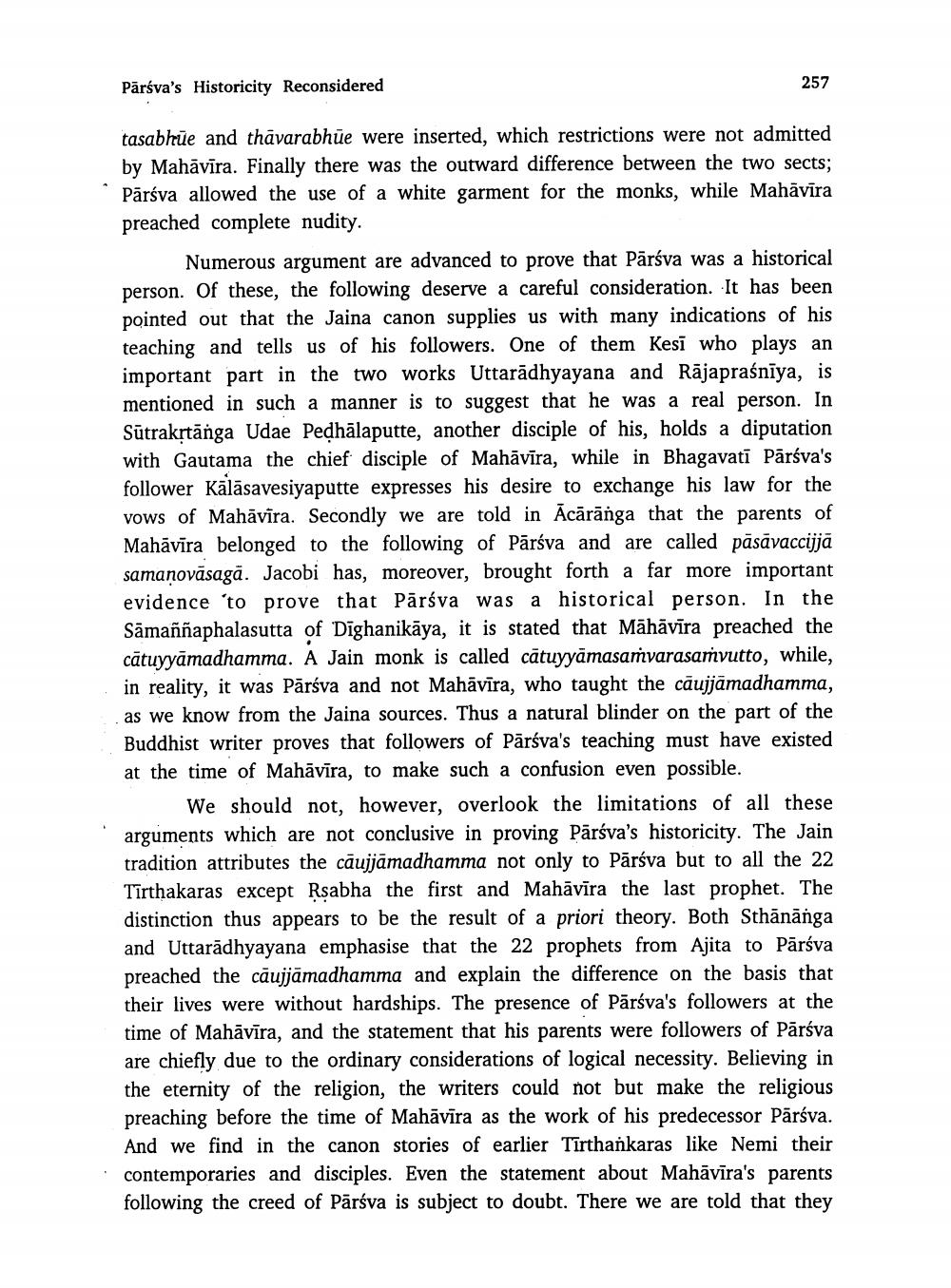________________
Pārsva's Historicity Reconsidered
257
tasabhrūe and thāvarabhūe were inserted, which restrictions were not admitted by Mahāvīra. Finally there was the outward difference between the two sects; Pārśva allowed the use of a white garment for the monks, while Mahāvīra preached complete nudity.
Numerous argument are advanced to prove that Pārśva was a historical person. Of these, the following deserve a careful consideration. It has been pointed out that the Jaina canon supplies us with many indications of his teaching and tells us of his followers. One of them Kesī who plays an important part in the two works Uttarādhyayana and Rājapraśniya, is mentioned in such a manner is to suggest that he was a real person. In Sūtrakrtānga Udae Pedhālaputte, another disciple of his, holds a diputation with Gautama the chief disciple of Mahāvīra, while in Bhagavati Pārsva's follower Kālāsavesiyaputte expresses his desire to exchange his law for the vows of Mahāvīra. Secondly we are told in Ācārānga that the parents of Mahāvīra belonged to the following of Pārśva and are called pāsāvaccijjā samanovāsagā. Jacobi has, moreover, brought forth a far more important evidence to prove that Pārśva was a historical person. In the Sāmaññaphalasutta of Dighanikāya, it is stated that Māhāvīra preached the cātuyyāmadhamma. A Jain monk is called cātuyyāmasaṁvarasamvutto, while, in reality, it was Pārśva and not Mahāvīra, who taught the cāujjāmadhamma, as we know from the Jaina sources. Thus a natural blinder on the part of the Buddhist writer proves that followers of Pārsva's teaching must have existed at the time of Mahāvīra, to make such a confusion even possible.
We should not, however, overlook the limitations of all these arguments which are not conclusive in proving Pārsva's historicity. The Jain tradition attributes the cāujjāmadhamma not only to Pārsva but to all the 22 Tīrthakaras except Rsabha the first and Mahāvīra the last prophet. The distinction thus appears to be the result of a priori theory. Both Sthānānga and Uttarādhyayana emphasise that the 22 prophets from Ajita to Pārsva preached the cāujjāmadhamma and explain the difference on the basis that their lives were without hardships. The presence of Pārsva's followers at the time of Mahāvīra, and the statement that his parents were followers of Pārsva are chiefly due to the ordinary considerations of logical necessity. Believing in the eternity of the religion, the writers could not but make the religious preaching before the time of Mahāvīra as the work of his predecessor Pārsva. And we find in the canon stories of earlier Tirthankaras like Nemi their contemporaries and disciples. Even the statement about Mahāvīra's parents following the creed of Pārsva is subject to doubt. There we are told that they




